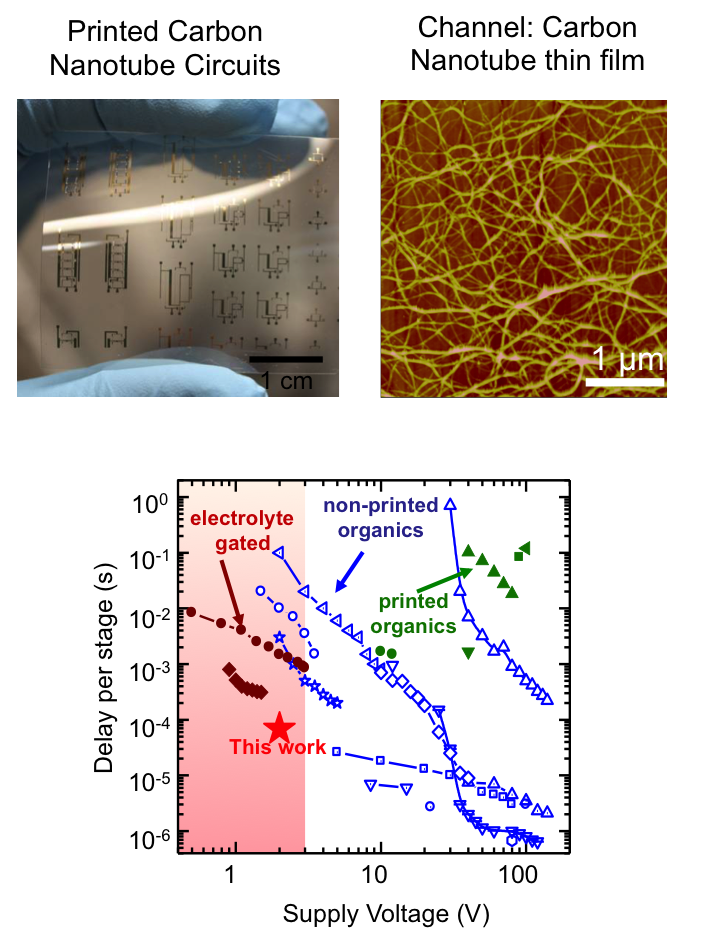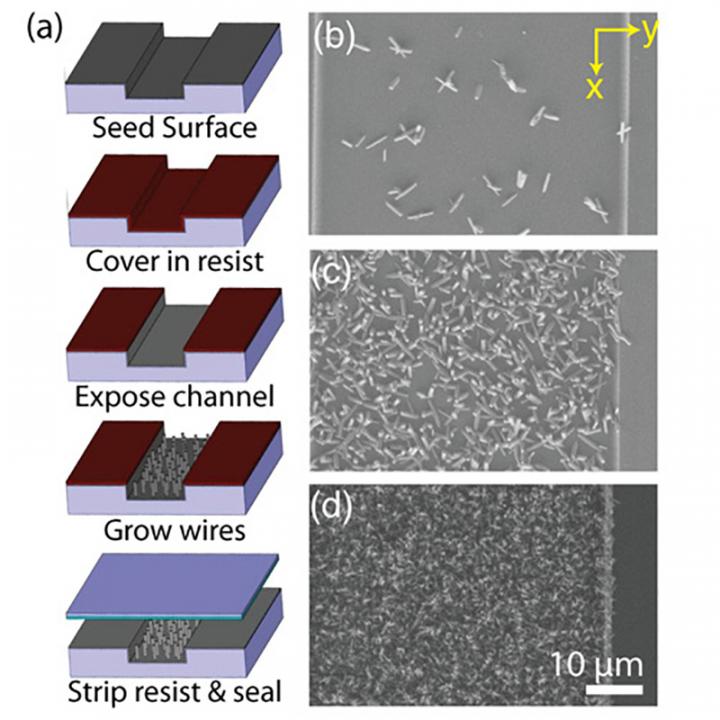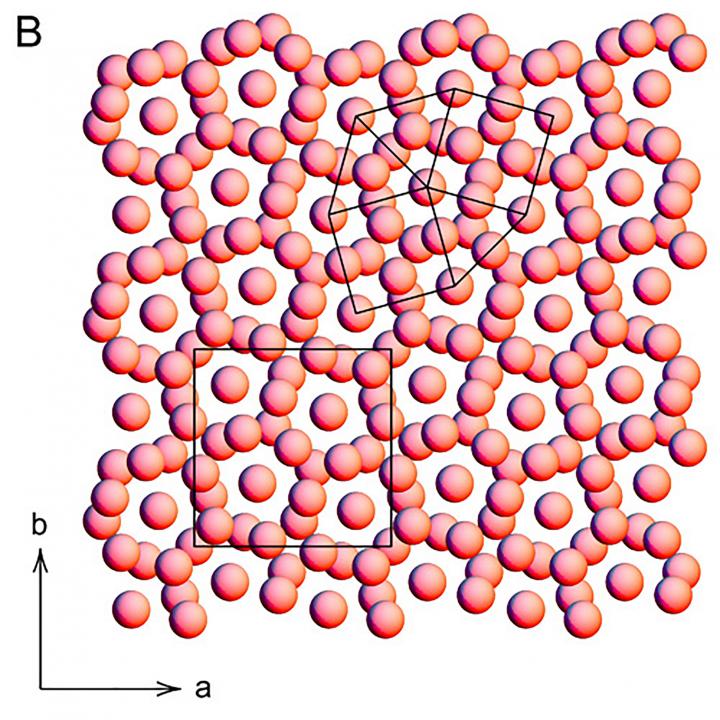Graduate student Mingjing Ha working with Optomec, Inc. and Northwestern University collaborators (Mark Hersam) has demonstrated low voltage, fast carbon nanotube (CNT) circuits printed on flexible plastic substrates. The circuits are fabricated by aerosol jet printing from a liquid dielectric ink (ion gel) and a purified semiconducting CNT ink (Northwestern).



